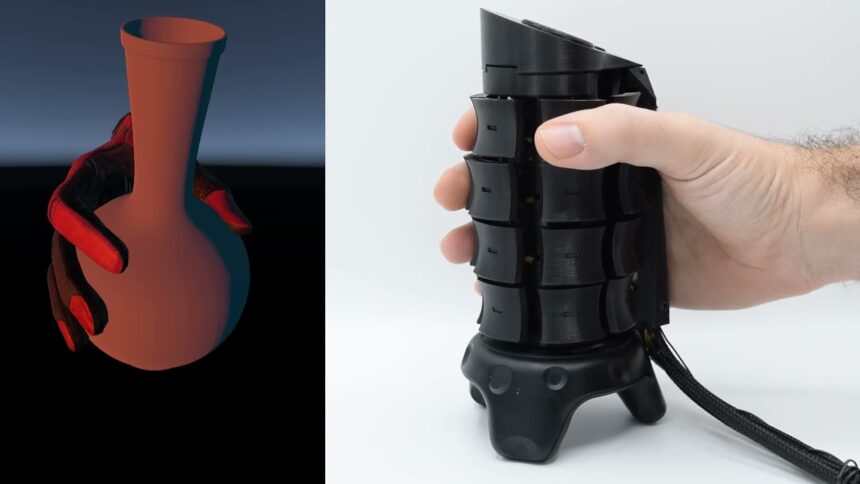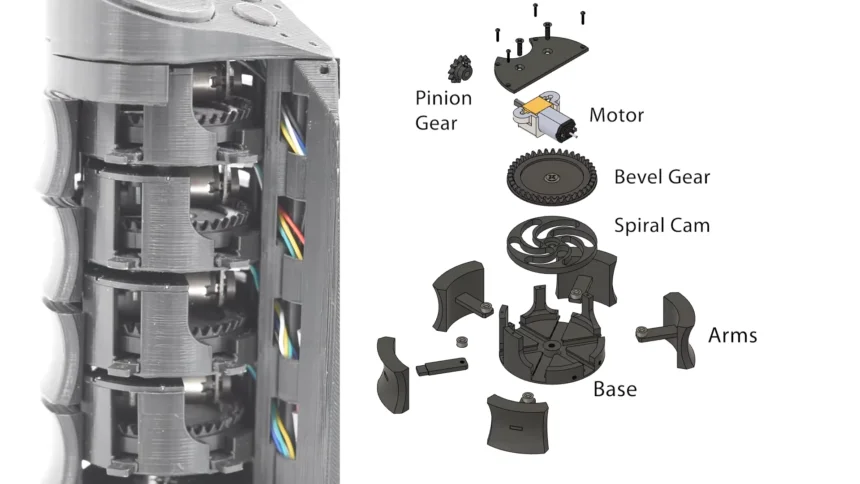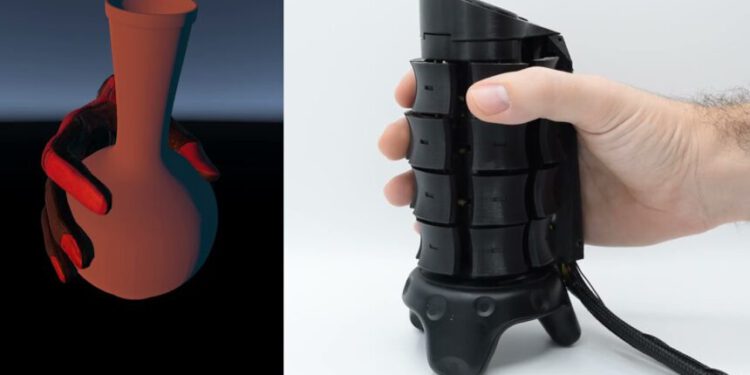
Microsoft researchers demonstrate the VR controller “X-Rings”, with which you can feel the shape and size of various virtual objects.
A research group from Microsoft Research presented at a specialized conference a VR controller that responds to the forces of touch and capture in virtual reality. A controller called “X-Rings” should be able to model various objects and their physical behavior.
Movable rings should make the forms of virtual reality tangible
X-Rings has four movable rings with several separate links around which the fingers are placed. Thumb on top. Each ring is controlled by a separate motor and can change its diameter from 5.7 to 7.7 centimeters.

The compressive force applied to the rings is measured by the current inside the motor. Individual links can withstand up to 15 Newtons. Virtual objects must be physically correctly represented using cross-shaped rings. If you squeeze the balloon, the corresponding deformation is displayed depending on the applied force, and you feel the back pressure until it bursts.
VR sensation: low latency when changing objects
Similar to Valve Index controllers, the loop on the back of the hand holds the X-Rings. This allows users to: open their hand inside and move their fingers freely. Capacitive touch sensors on the surface register when the hand squeezes or opens. Thus, the hand in virtual reality in the application is always animated in accordance with the real movement.
Adaptation to different objects should occur in less than 100 milliseconds. This should not create a noticeable delay between viewing and touching the object and the corresponding sensation.
The controller achieves high success rates of working with test subjects
With the exception of screws and nuts, all parts of the controller are supplied with a 3D printer. To assess the real impact on users, the research team conducted a small study.
Participants viewed six different objects side by side in virtual reality. Then they grabbed the X-Rings controller and described what kind of item it is. According to the research team, in about 80% of cases, the subjects were able to correctly match an object modeled by X-Rings with a visible object.
Microsoft loves Tactile VR Projects
Interestingly, Microsoft researchers quite often present virtual tactile projects, such as X-Rings. More recently, for example, Microsoft and the Korea Institute have introduced a full-time Gamesbond controller that can simulate a continuous object between two independently tracked VR controllers.
In the fall of 2020, Microsoft, along with other research institutions, demonstrated PIVOT, an XR controller that is worn on the wrist and simulates tactile sensations such as tension or pressure. There are other Microsoft examples, such as Torc, but none of them have yet entered the market.







